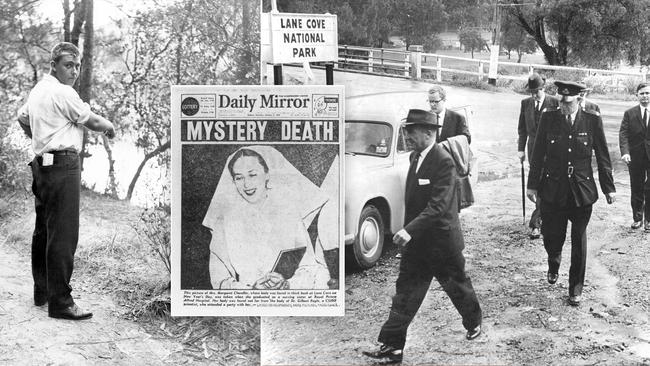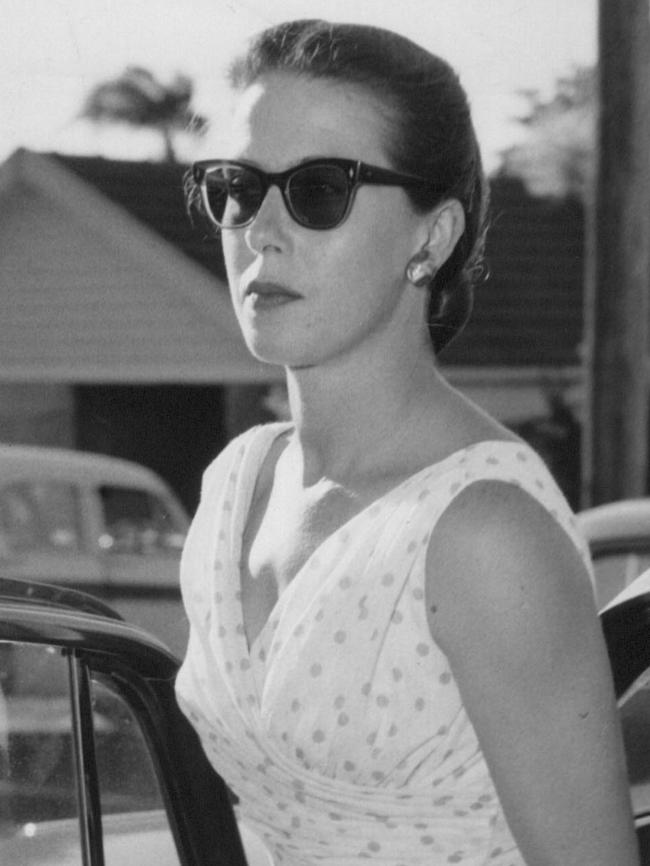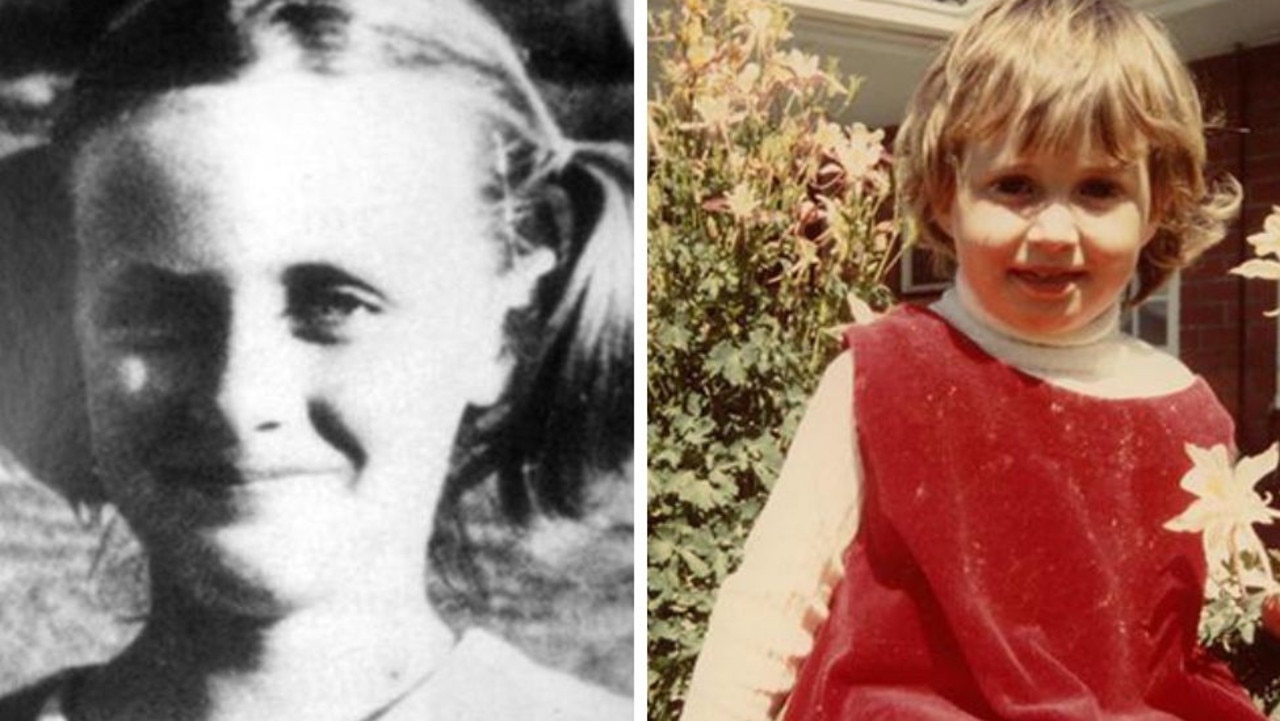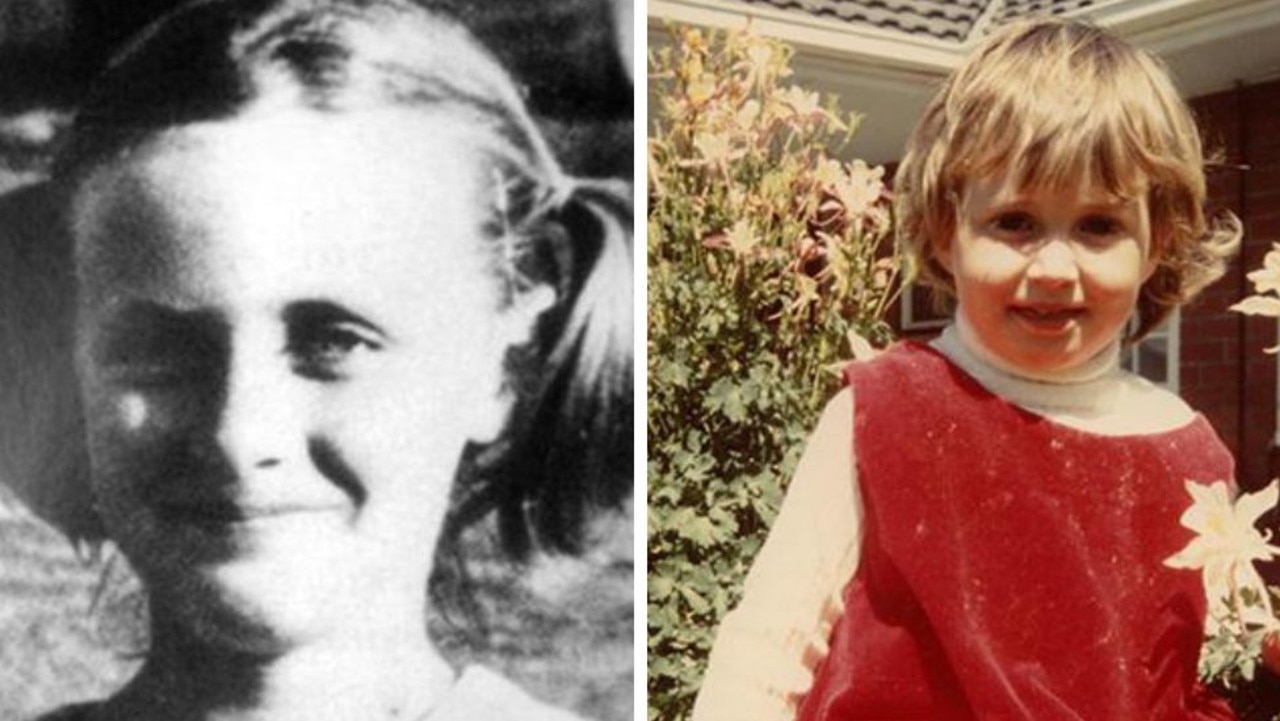Was this the perfect murder?
WHEN the semi-naked bodies of two illicit lovers were found in suburban scrub after a New Year’s Eve tryst, it kicked off one of the nation’s most baffling murder mysteries. Five decades on, it remains unsolved.

Cold Cases
Don't miss out on the headlines from Cold Cases. Followed categories will be added to My News.
SYDNEY, New Year’s Eve, 1962. Esteemed CSIRO physicist Dr Gilbert Bogle and Margaret Chandler, the carefree wife of one of Bogle’s colleagues, sneak away from a party in Chatswood to consummate a mutual attraction which had blossomed just weeks earlier.
It was a sultry evening, and the couple made their way to a secluded spot on the Lane Cove River - a popular spot for couples seeking privacy.
The next morning - New Year’s Day - a teenager collecting golf balls found the couple dead on the bank of the river.
Bogle, 38, was lying face-down dressed only in his shirt, shoes and socks. A piece of carpet, which fitted into his car, covered his body from his neck to his buttocks, and his coat and trousers were placed over his body and the carpet. There was a fresh semen stain on his coat.
Chandler, a married mother of two, was on her back with the top of her floral party frock pulled down and her bra partly removed. Her bare feet and knees were covered with mud. A pair of men’s underpants was lying between her legs. Her body had been covered with three mouldy pieces of cardboard from beer cartons.

Both bodies were surrounded by vomit and faeces and by midmorning the smell, aided by the summer heat, made seasoned detectives gag when they arrived at the scene. Police immediately suspected the couple had been poisoned, but later forensic examination of the bodies failed to find any traces of toxic material.
So how had they died? And who covered up their bodies?
This case quickly proved a sensation. It involved a high-society party, alleged wife-swapping, an unidentified third person at the death scene, and an unidentified poison. There was also speculation that Bogle was involved in research important in the Cold War.
The nation hung on every detail of the deaths and romantic entanglements. Had the brilliant, flamboyant Rhodes scholar Bogle and beautiful Margaret Chandler been poisoned? Committed suicide? Overdosed on LSD, or been assassinated by international spies or the Russians because of Bogle’s research into lasers?
The ensuing investigation would lift the lid on a bohemian movement that was at odds with the social mores of the time. The subculture known as The Push favoured a libertarian lifestyle with sexual and religious freedom.
But on that New Year’s morning, the police had just one suspect: Margaret Chandler’s husband, Geoffrey, a CSIRO scientist whose lab was in the same building as Bogle’s.

More than 40 years later, Chandler told filmmaker Peter Butt that he was woken on New Year’s Day 1963 by police. “They took me to Chatswood police station and by this time the newspapers had an edition out with [the murder] on the front page.
“They showed that to me, quite sort of cold-bloodedly, to gauge my reaction I guess,’’ he recalled for the documentary Who Killed Dr Bogle And Mrs Chandler?
“I was summonsed down to the old morgue. You could not have possibly conceived of a more callous way in which she [Margaret] was presented.’’
Shortly before Christmas 1962, Bogle, the Chandlers, and several others attended a CSIRO staff barbecue. On the way home Mrs Chandler told her husband she was quite taken with Dr Bogle.
Mr Chandler told the police that he and his wife had “an understanding”. He told her: “If you want to take Gib as a lover, if it would make you happy, you do it.’’
Chandler later said: “She was flattered by his attention and he was attracted to her because she was a very pretty and lovely lady. I think the reason we [later] got the invitation [to the Nash’s party) was because of Gib’s attraction to Margaret, and his desire to see her again.’’
Chandler believed his wife of six years knew he was involved with another woman, but not the identity of his lover.
``I sort of made this arrangement that if Margaret wanted to continue the evening with Gib, then that was fine, and I would take myself off to the other party which was more to my liking,’’ he said.

He returned three hours later and left alone at 4.10am after asking Bogle to drive his wife home. He then drove to Granville to collect his sons from their grandparents’ house before returning home to Croydon.
Ten minutes later, Bogle and Margaret Chandler also left, driving 5km to a lovers’ lane spot by the Lane Cove River. Not long after, they died there in agony.
Bogle’s was the first body found, by teenager Michael McCormick, who was taking a shortcut through the bush on his way to Lane Cove golf course.
“As I was walking along the track, I noticed there was a log - a small piece of a tree on the road. looked at the log and glanced down towards the river and saw this man lying,” he told the City Coroner’s Court four months later.
“I thought he was a hobo who had been drinking and was sleeping it off. I saw his face was turning blue. It didn’t look right.”
Slightly puzzled, he continued on to the golf course, where he met his mate Denis Wheway.
After collecting balls for about an hour, the friends headed back shortly after 9am. As they neared the track, Michael told his mate about the drunk he had seen.
As they approached the spot where Bogle’s body was lying, Michael noticed his face was darker and Denis pointed out there was a small trickle of blood from his nose to his mouth.

Did someone follow and kill the couple, or was their modesty protected by a stranger who simply didn’t want to be dragged into a double murder investigation?
An initial suspect was a voyeur who contacted police twice, using different names. After interrogation, he was quickly dismissed. The prime suspect was a greyhound trainer who slipped his dogs daily on a path that passed the site where the bodies were found. He came forward only after his car was identified and, when interviewed by police, claimed to have used a different path that day and denied seeing the bodies.
Exhaustive forensic tests failed to find a cause of death.
A delay in locating the coroner meant the autopsy was unable to trace any poisons but concluded Bogle died about 5am and Margaret Chandler an hour later.
Police scoured the bushland for venomous spiders, probed the bottom of the river for poison bottles, checked food and drink from the party and even scanned the corpses for radioactivity. The laboratories of Bogle and Geoffrey Chandler were torn apart in the hunt for clues.
Jenkings believed one of the 22 guests at the Nash party slipped dog-worming tablets into the couple’s drinks as a prank.
In other theories that whirled around Sydney, the pair were murdered using a supersonic death ray that left no trace, or assassinated by Russian double agent Kim Philby to prevent Bogle from taking up a post with US telephone company Bell.


After hearing 50 witnesses, Mr Loomes, reported: “It gives me no satisfaction to sit here and tell you that all we know about this is that two people died from acute circulatory failure, the cause of which is unknown.”
The mystery was reignited with the deaths of the Nashes. Gossips believed party host Ken was jealous of Bogle’s success with the ladies; others suggested his wife Ruth had been a Bogle conquest.
Neither allegation was ever proven and on New Year’s Day, 1974, Ruth Nash died of cancer. Two years later, also on New Year’s Day, Ken Nash shot himself dead.
More than 50 years on, it is unlikely the deaths of Dr Bogle and Mrs Chandler will ever be solved.
There have been many theories, but near enough evidence to say conclusively what happened.
If they were killed by Ken Nash, he took that knowledge to the grave. If it was some other third party, they would likely be in their 80s by now - if they’re still alive.
It’s unlikely we will ever know.
Originally published as Was this the perfect murder?


